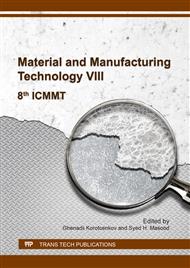p.141
p.148
p.155
p.165
p.172
p.177
p.182
p.187
p.196
Mixing and Comparative Properties of NR Compounds Filled with Different Types of Reinforcing Fillers
Abstract:
Mixing behaviors of the compounds filled with different reinforcing fillers were studied in correlation with compound and vulcanizate properties. Four filler systems were used including: 1) silica plus small amount of silane coupling agent; 2) carbon black; 3) pre-modified silica; and 4) silica+silane-carbon black mixed one. The results have shown that silica provides longer optimum cure time and shorter cure rate than carbon black due to accelerator adsorption on silica surface. In addition, owing to highly polar nature on silica surface the silica-based compounds show rather high viscosity, attributed to stronger filler-filler interaction as can be confirmed by Payne effect and reinforcement index. However, the commercial surface treatment or pre-modified form of silica shows superior properties than in-situ modification of silica by silane during mixing, while it gives comparable properties to carbon black-based compound. Tensile properties of vulcanizates show a good correlation with the basic properties of their compounds.
Info:
Periodical:
Pages:
172-176
Citation:
Online since:
October 2017
Authors:
Keywords:
Price:
Сopyright:
© 2017 Trans Tech Publications Ltd. All Rights Reserved
Share:
Citation:


